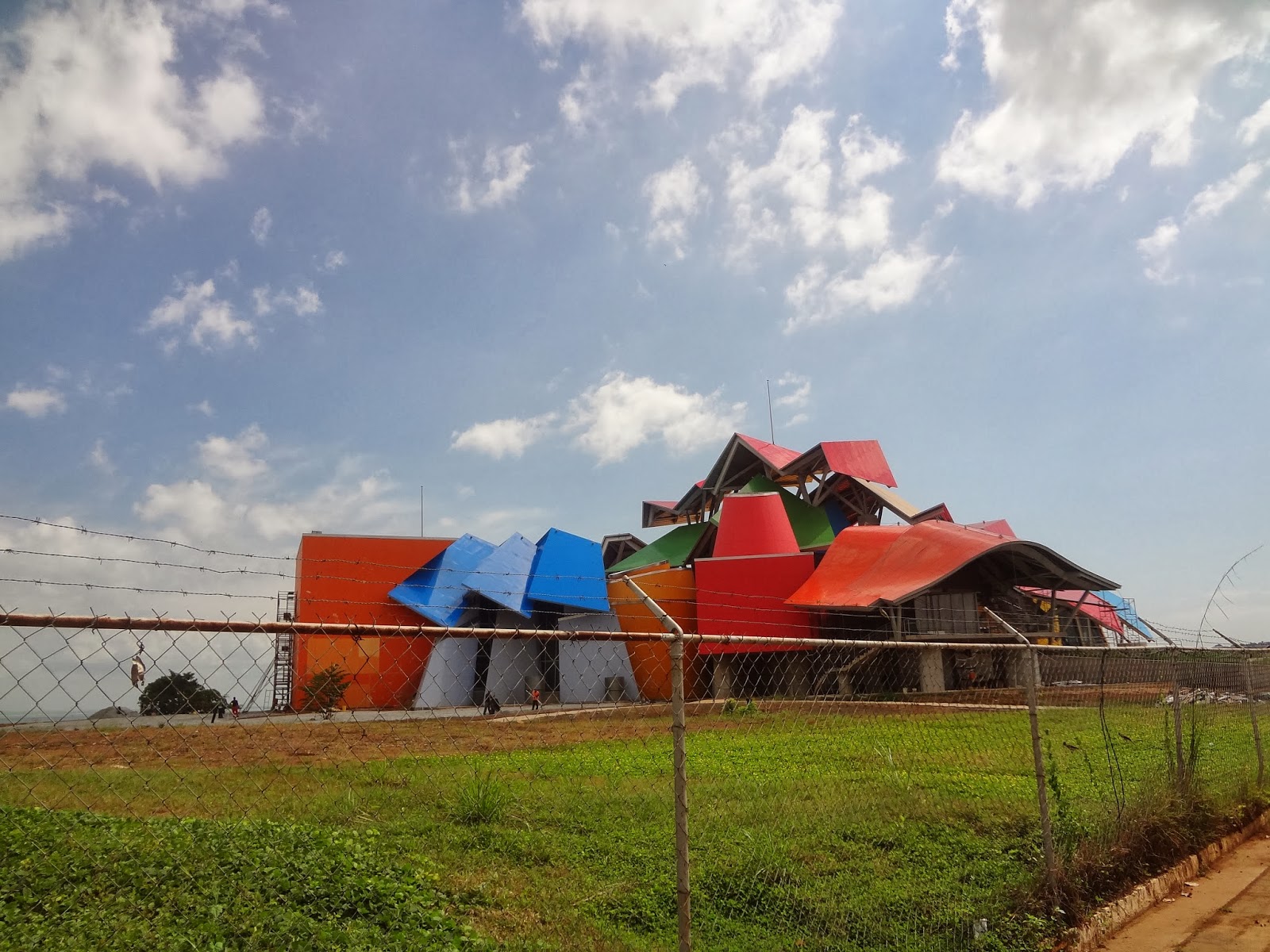The Wind Rose
Monday, December 9, 2013
Panama City Part 2: Walks and Locks
Monday, December 2, 2013
Back to Costa Rica
Sama skipped too far ahead before catching you up on our adventures, so I’ll fill in the week long gap when George visited us in Costa Rica (almost a month ago). Leaving Nicaragua was well planned and relatively hassle free, except we tried to cross the border during lunch so (inevitably) had to wait until the border officers were done eating. Something about this scenario reminded me of Italy.
Anyway, we met up with George in Liberia, the Capital of Guanacaste, the north eastern region of Costa Rica. They have an airport there, and it’s nice, because you don’t have to go to (or even think about) San Jose. We caught a perfectly timed 20 minute bus ride, and found George within half a minute of getting off the bus. After some waiting to get the rental car out of the Hertz parking lot, we were finally on our way to our first destination: Rancho Margot, an Ecolodge by the infamous volcano Arenal. Infamous in the fact that it was actively erupting long enough to develop a strong tourist center in the area, and then abruptly stopped in 2010. Not that it mattered though; for the three days we were in the area, the volcano was socked in with clouds the entire time—we didn’t see much more than the base of it.
The famous Monteverde Cloud forest (which was where everyone we told we were working in the cloud forest assumed we went to) encompasses the area, but it was lower elevation and thus warmer than Cloudbridge. However, it rained more while we were there, so we mostly stayed around the ecolodge. Rancho Margot itself was an awesome place. They pride themselves in being over 70% sustainable, and boast their own pig/cow/lamb farm, as well as their own soap factory and vegetable garden. They use hydroelectric for power, and heat their water by running their pipes through a manure-based compost facility (the showers were not hot). They also had the most adorable golden retreiver puppies (four in all):
While in the Arenal area, we went hiking to a waterfall, we saw a butterfly garden, and then we went zip lining!
Zip lining was the main reason George wanted to visit us in Costa Rica, so we did our research and took him to one that had a set of sky bridges too. Sadly, though, a mudslide left most of the bridges inaccessible, so we only got to see two. We were really happy, because Sama and I probably wouldn’t have done it if George hadn’t insisted. Which is still a little baffling because he is afraid of heights almost as much as snakes. So we harnessed up and took a gondola to the top of a mountain with the intent to fly down. It’s a shame we don’t have a picture of George’s face when he heard what we had to do if we got stuck halfway through a line, but needless to say it was worth the whole excursion. From then on we had to make sure George went first down the first big one before he could return via the gondola :-) After that though, we all had a blast. Here are some pictures:
The top right picture is an eyelash palm pit-viper under one of the viewpoints. Hard to see, but pretty cool.
After zip lining we drove a ways to the north west, to another smaller range of volcanoes, to our next destination, Celeste Mountain Lodge. This place was another eco lodge, situated near the Rio Celeste, an ethereal blue river that gets its hue form a chemical reaction between the sulfur and calcium carbonate in the water. Only a picture can explain:
but because it was pouring for most of the time we were there, google might be a more accurate representation: better pictures.
The cool part of this area is the wildlife we saw. In the gardens of the lodge they had red-eyed tree frogs. They are the icon of Costa Rica, and it would have been a shame not to see them before we left. Here is a picture of one sleeping during the day (their nocturnal) that we saw at the butterfly gardens by Arenal,followed by the wild one we saw at night. Awesome!
We also saw a boa constrictor on the way to the park. It was a good 2 m long, but still it was an adolescent. The last picture is it rearing at George after some idiot tourist touched it.
Finally, we saw an anteater leaving the park. Sama spotted it in the pouring rain as we were hiking out, and if it wasn’t for the rain we probably wouldn’t have seen it. It wandered around oblivious to us, and climbed up a tree, then down another one before a horde of French Canadians scared it (and us) away.
Finally, we made a harried and back breaking 5 hour trip to the beach on terrible roads, with only a couple unplanned detours. We headed to Montezuma, a town on the south western tip of the Nicoya Peninsula. It was really quite far, but once we got there we were happy to relax at the beach for the last four days of George’s trip. We don’t have the rest of George’s pictures with us, so you can use your imagination. One day we took a boat to Isla Tortuga and went snorkeling for a day, but mostly we lazed around the beach and ate really well.
That’s all for now, we’re in Santa Marta for the next couple of days, staying in a hostel made our of an old drug cartel safehouse. It has a ghost.

















































